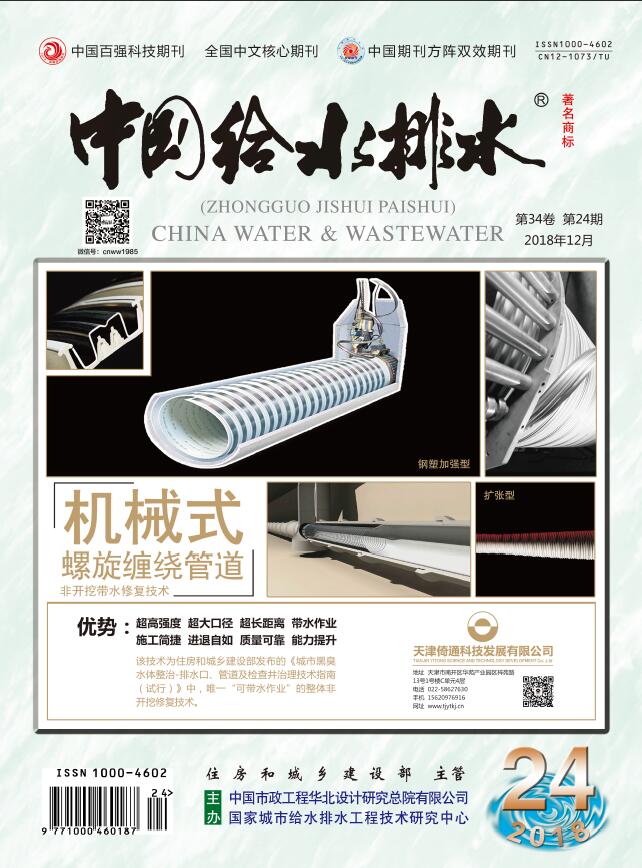DENGYong-chun,CAOJiang-ling,WUPei-rong,et al.Impact of Mixing Effect in Pre-anoxic Phase on Stability of Aerobic Granular Sludge in Treating Wastewater with Low Carbon to Nitrogen Ratio[J].China Water & Wastewater,2025,41(9):8-16.
Impact of Mixing Effect in Pre-anoxic Phase on Stability of Aerobic Granular Sludge in Treating Wastewater with Low Carbon to Nitrogen Ratio
China Water & Wastewater[ISSN:1000-4062/CN:12-1073/TU]
volume:
第41卷
Number:
第9期
Page:
8-16
Column:
Date of publication:
2025-05-01
- Keywords:
- aerobic granular sludge; low carbon to nitrogen ratio wastewater; anoxic phase; external circulation; stability
- Abstract:
- Low stability of aerobic granular sludge(AGS) in long-term operation is the main problem hindering its further application in practice. To investigate the impact of the mixing effect in pre- anoxic phase on the stability of AGS, a sequencing batch reactor (SBR) inoculated with AGS refrigerated for 6 months was set up with increased carbon and nitrogen load (C/N) from 200/40 mg/L to 600/150 mg/L in this study. The mixing effect of the pre-anoxic phase was adjusted by adding and not adding an external circulation operation. The properties of the AGS, such as the performance, stability, and microbial community structure, were examined. The results showed that when the C/N was 400/50 mg/L with no external circulation, the removal rate of COD, NH4+-N and TN were 95%, 99%, and 20%, respectively, after the seeded AGS revived. When the C/N was increased to 400/80 mg/L and 400/100 mg/L with external circulation, COD and NH4+-N removal rate could still maintain at 95% and 99%, respectively, but the TN removal rate greatly increased to 50%, although the settling ability of the AGS deteriorated due to the mass production of gaseous nitrogen from denitrification, with SVI30 fluctuating between 50 mL/g and 150 mL/g. However, when the C/N was increased to 600/150 mg/L with no external circulation, NH4+-N and TN removal rate decreased to 50% and 6%, respectively, although COD removal rate could still maintain at about 95%. At the same time, the physical structure of AGS became loose and dispersed with the average particle size increased to 791 μm and SVI30 deteriorated to 175 mL/g. High-throughput sequencing analysis showed that the microbial diversity and richness of aerobic particles increased with the external circulation in the anoxic phase, and the main genus were denitrifying bacteria, mainly including Thauera and Rhodobacter. These findings demonstrated that the external circulation operation in anoxic phase can improve the denitrification performance of AGS system and enrich a large number of denitrifying bacteria by enhancing the mixing effect, thereby enhancing its stability .
Last Update:
2025-05-01

